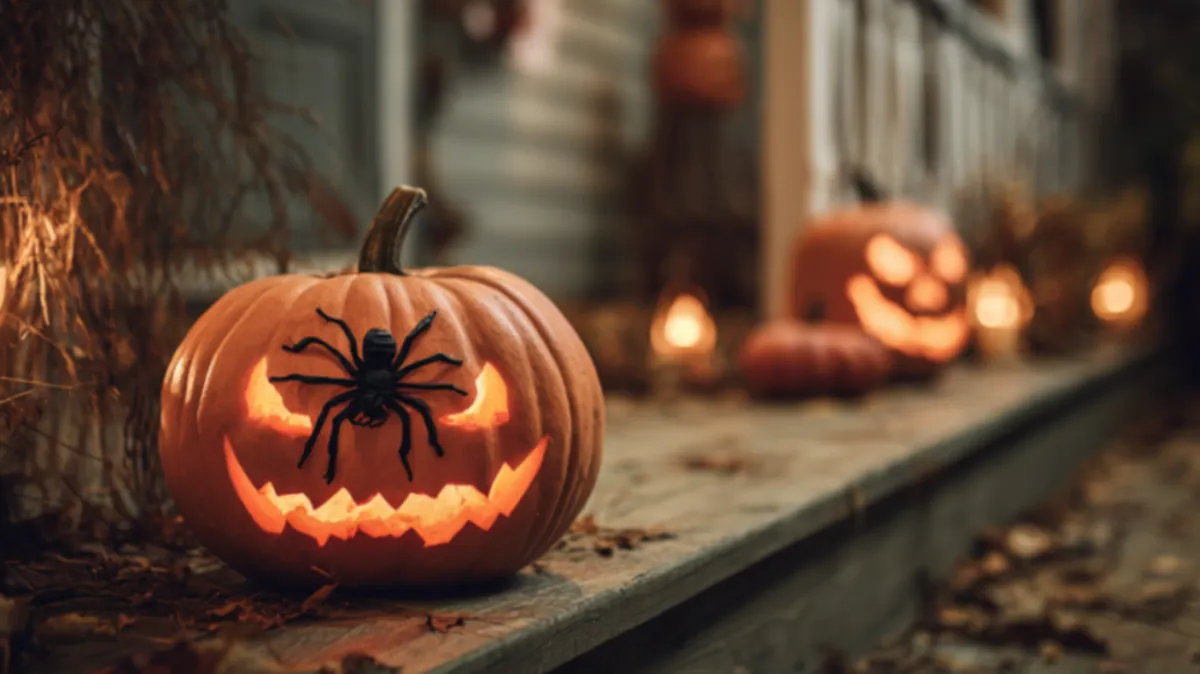The Shield Pest Journal
Check out Shield Pest Appalachia’s most recent blog posts for helpful pest prevention and control suggestions. Our blog covers from detecting common pests to creating tailored solutions in the Tennessee and Virginia areas. Do you have a pest-related question? Contact us today for experienced guidance and solutions targeted to your specific needs.

Pests Be Gone: Halloween Safety Tips for Appalachian Homes
Don’t Let Jack-o'-Lanterns Turn into Pest Buffets
Carved pumpkins are a classic symbol of Halloween fun—but without proper care, these festive decorations can quickly turn into an open invitation for pests. As pumpkins begin to decay, they release moisture and sugar, which are highly attractive to flies, ants, cockroaches, and even rodents.
To keep your home’s Halloween charm from becoming a haunted hub of pest activity, follow these essential pumpkin protection strategies:
Pumpkin Protection Tips:
1. Wait to Carve:
Delay carving your pumpkins until one or two days before Halloween.
This minimizes the time they’re exposed to air and pests.
Uncut pumpkins can last for weeks, but carved ones may rot in just a few days.
2. Keep Them Elevated:
Avoid placing pumpkins directly on porches, soil, or mulch.
Instead, use decorative stands, crates, or small tables to lift them off the ground.
This deters crawling insects like ants, earwigs, and beetles from getting easy access.
3. Apply a Natural Preservative (Optional):
Consider using a pumpkin-safe spray made of water, vinegar, and lemon juice to slow down decomposition.
A light coating of petroleum jelly around carved edges can also help retain moisture and discourage mold.
4. Dispose Promptly and Properly:
As soon as your pumpkins begin to soften, shrivel, or smell, it’s time to toss them.
Bag them tightly and place them in your trash bin—not in the yard, garden, or compost pile where they can attract rodents, raccoons, and bugs.
5. Monitor Surrounding Areas:
Check the area around your pumpkins daily for signs of ant trails, fruit flies, or rodent droppings.
Quick detection means faster intervention and a cleaner, safer porch.
Seal Up Entry Points Before Spiders and Mice Move In
As temperatures dip in October, pests like spiders, mice, and other critters begin their annual migration indoors. Even the tiniest gaps or cracks in your home's exterior can become an open door for these unwelcome guests. A single mouse can squeeze through a hole the size of a dime—and once inside, it could be days before you even notice. Prevention now is far easier (and cheaper) than dealing with an infestation later.
Use the following Halloween Home Hardening Checklist to block pests before they creep in:
Halloween Home Hardening Checklist:
1. Inspect and Reseal Window and Door Frames:
Check for visible cracks or daylight around doors and windows.
Replace old or brittle weatherstripping to improve insulation and pest resistance.
Apply fresh caulk around window casings where needed to block tiny invaders like spiders and beetles.
2. Install or Replace Door Sweeps:
Secure brush or rubber door sweeps at the base of all exterior doors, especially garage and basement entries.
This helps prevent crawling pests like ants and spiders, as well as small rodents, from sneaking underneath.
3. Seal Utility Penetrations:
Look for gaps where plumbing pipes, electrical cables, or HVAC lines enter your home—common hiding places for pests.
Fill these holes with silicone caulk or expanding foam to create a tight seal.
Don’t forget the areas behind washing machines, under sinks, and near outdoor faucets.
4. Secure Attic Vents, Crawl Space Doors, and Dryer Vents:
Check that all vent covers are snug, undamaged, and pest-proof.
Use hardware cloth (a metal mesh) to reinforce attic and crawlspace vents.
Make sure dryer vents have functioning flaps that close tightly when not in use.
5. Examine the Foundation and Siding for Cracks:
Walk the perimeter of your home and inspect for crumbling mortar, gaps in siding, or cracks near the foundation.
Even a small crack can serve as a welcome mat for spiders or rodents looking for a cozy fall hideout.
Use mortar repair or exterior-grade caulk to seal these vulnerable areas.
Mind the Decorations—They Might Be Hiding Pests!
There’s nothing quite like transforming your home into a haunted haven for Halloween, but beware—those cobwebs might be real! Decorations stored in attics, garages, basements, or sheds are often forgotten for months, making them prime nesting spots for pests like spiders, silverfish, stink bugs, or even mice. Without proper precautions, your spooky setup could come with some unwanted jump scares of its own.
Follow these Smart Decorating Tips to avoid giving pests a free ride into your home this fall:
Smart Decorating Tips:
1. Unpack Seasonal Décor Outdoors First
Open storage bins on the porch, patio, or driveway to inspect contents before bringing them inside.
This prevents pests hiding in boxes from escaping into your living space.
2. Shake Out Costumes, Wreaths, and Fabric Items
Before hanging that front-door wreath or putting on last year’s costume, give items a good shake.
Look out for spider webs, insect casings, or rodent droppings.
Wash costumes and fabric decorations in hot water if possible for added peace of mind.
3. Swap Cardboard for Plastic
Store Halloween items in airtight plastic containers with snap-on lids.
Unlike cardboard boxes, plastic bins are resistant to moisture, harder for pests to chew through, and easier to stack and label.
Label containers clearly so you can find what you need without rummaging—less disturbance means fewer chances of waking any hidden critters.
4. Inspect for Chew Marks or Droppings
Before reusing lights, props, or inflatables, look for signs of rodent activity such as frayed wires, gnawed plastic, or black pellet-like droppings.
If you notice any of these signs, discard the item and sanitize the surrounding area.
5. Clean Up After Decorating
Vacuum or sweep the area where your decorations were stored to remove insect debris, shed skins, and dust that can attract new pests.
Use a disinfectant on hard surfaces and consider setting out pest monitors or sticky traps nearby.
Don’t let pests crash your Halloween party! With a little prevention and regular service from Shield Pest Appalachia, you can protect your home from fall invaders—keeping your family, guests, and candy stash safe.
📍 Proudly serving Johnson City, TN and surrounding Appalachian communities
📞 Call today or schedule online for your fall pest prevention inspection.
Office:
1300 University Pkwy, Johnson City, TN 37604, United States
Call
423-379-2775
Copyright 2024. All Right Reserved.

